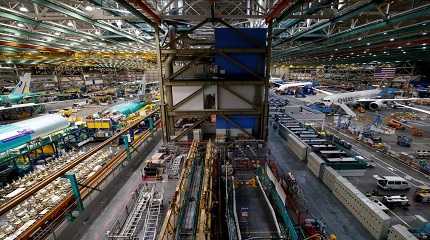
WASHINGTON (AP) — The U.S. economy shrank at a 1.6% annual pace in the first three months of the year even though consumers and businesses kept spending at a decent pace, the government reported Wednesday in a slight downgrade from its previous estimate for January-March quarter.
It was the first drop in gross domestic product — the broadest measure of economic output — since the second quarter of 2020, in the depths of the COVID-19 recession, and followed a strong 6.9% expansion in the final three months of 2021. Inflation is running at 40-year highs, and consumer confidence is sinking.
Still, the negative number probably doesn’t signal the start of a recession, and economists expect growth to resume later this year.
The first-quarter dip was largely caused by two factors that don’t say much about the underlying health of the economy:
A bigger trade deficit — reflecting Americans’ appetite for foreign goods and services — slashed 3.2 percentage points off the change in January-March GDP.
And a slower restocking of goods in stores and warehouses, which had built up inventories in the previous quarter for the 2021 holiday shopping season, trimmed another 0.4 percentage points off first-quarter economic growth.
Consumer spending, which accounts for around two-thirds of economic output, rose at a 1.8%% annual rate from January through March. And business investment grew 5%.
Still, the U.S. economy, which has enjoyed a brisk recovery from 2020′s short but devastating coronavirus recession, is under pressure as the Federal Reserve raises interest rates to rein in inflation that’s running at a 40-year high.
The rebound caught businesses by surprise, and an unexpected surge in customer orders overwhelmed factories, ports and freight yards, leading to shortages, delays and higher prices. In May, consumer prices rose 8.6% from a year earlier, biggest year-over-year jump since 1981.
In response, the Fed sped up its plan to raise interest rates, hiking its benchmark short-term rate by three-quarters of a percentage point, heftiest increase since 1994. The Fed hopes to achieve a so-called soft landing — slowing economic growth just enough to bring inflation down it its 2% target without causing a recession.
Higher borrowing costs are already pinching the housing market.
For the full year, the economy is still expected to turn in respectable growth: 2.5%, according to the World Bank.




